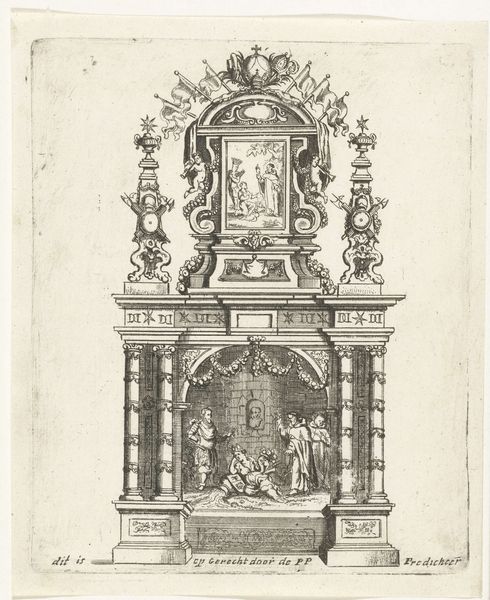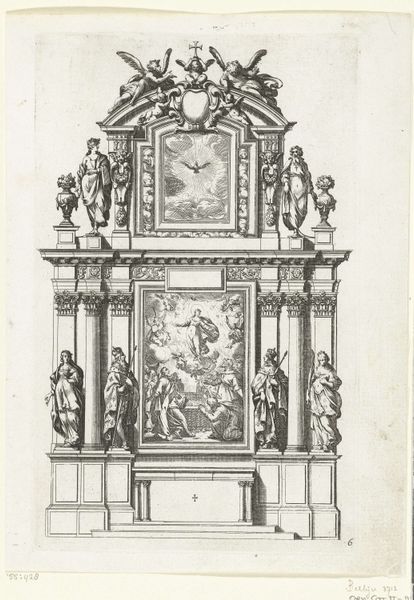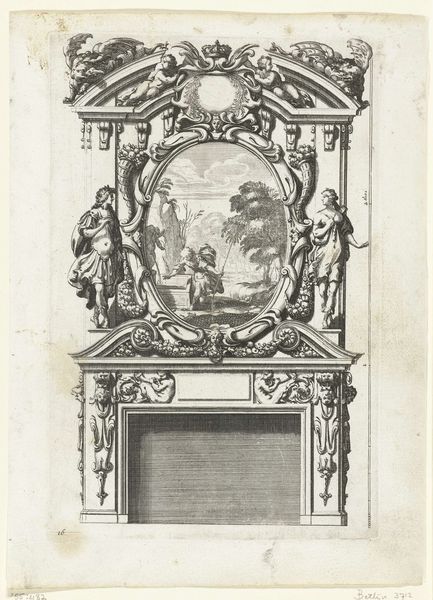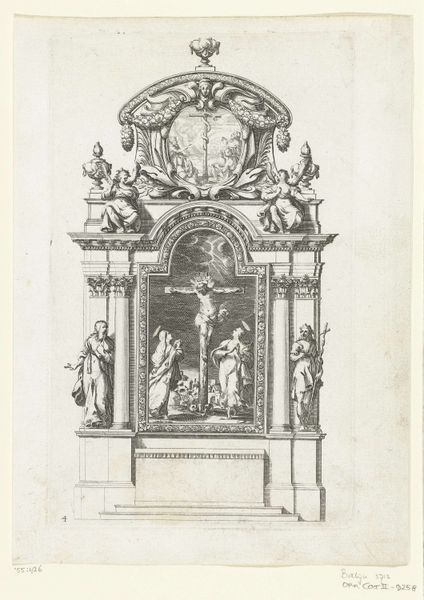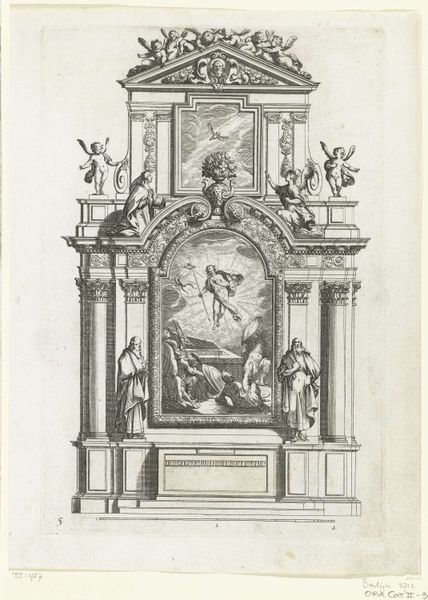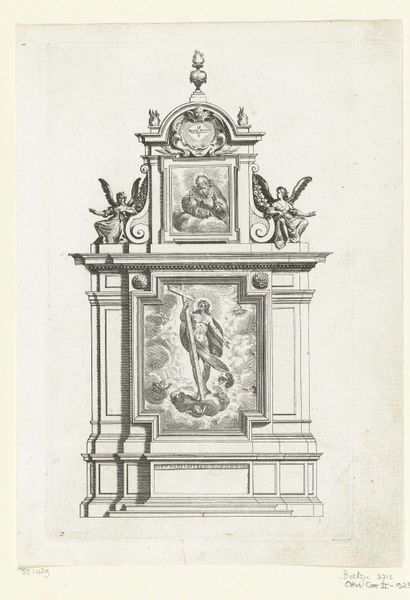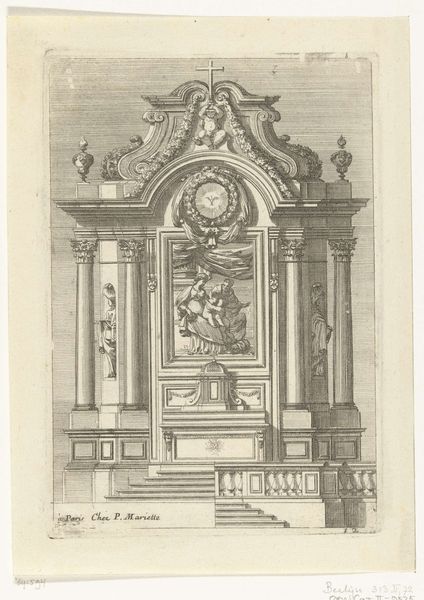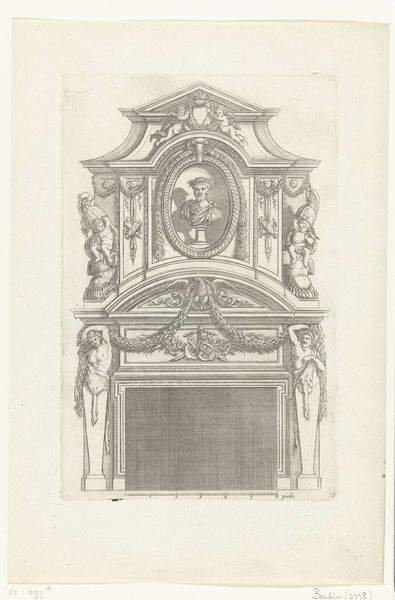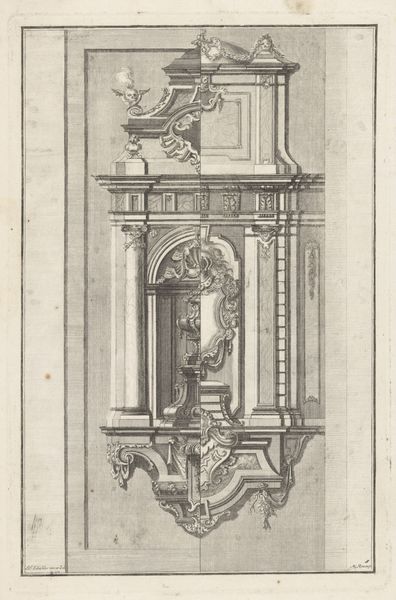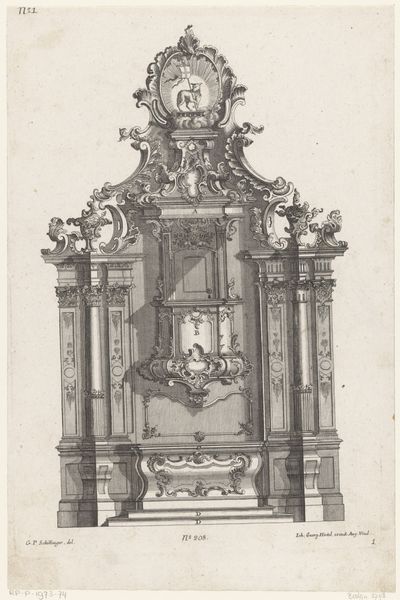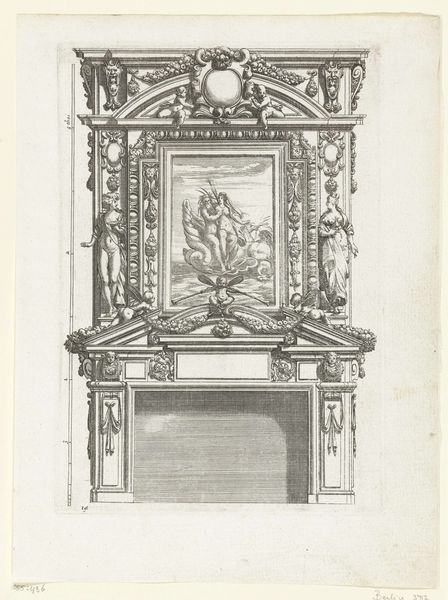
drawing, print, engraving, architecture
#
drawing
# print
#
old engraving style
#
figuration
#
11_renaissance
#
geometric
#
history-painting
#
italian-renaissance
#
engraving
#
architecture
Dimensions: height 22 mm, width 54 mm
Copyright: Rijks Museum: Open Domain
Curator: An engraving of a fireplace! I’m immediately struck by the symmetry and decorative detail. The putti above, the central figures, even the shape of the firebox opening… It's very pleasing to the eye. Editor: Indeed. Here at the Rijksmuseum, we know this engraving as "Fries met borstkuras en putti." Sebald Beham created this drawing/print somewhere between 1510 and 1544. This object, an engraving, raises interesting questions about artistic labor and class. Was Beham designing for the elite or for a broader market of skilled craftspeople? Curator: That’s a good point. There's a narrative scene incorporated within the design of the mantel—are we seeing figures from classical mythology perhaps, or a biblical scene? Editor: That internal narrative might signal aspirational values. Displaying an elaborate fireplace like this signaled wealth and cultural capital, demonstrating access to classical ideals and artistry. Who were the patrons commissioning pieces with such obvious symbolism, and what social hierarchies did it reinforce? Curator: I’d argue that regardless of its intended market, it is beautiful, focusing on the interplay of light and shadow achieved through intricate lines, but considering its original physical form opens a whole new layer to understanding it. It shows the importance the artisans gave to the hearth and home. Editor: But the very production of this print reflects and reinforces a hierarchical system of skilled labour within printmaking workshops. Someone engraved the design, someone printed it, someone else likely sold it. The final consumer is just one part of that process. Curator: Still, you can’t deny how Beham employs lines to achieve incredible textures and visual depth, right? Or how cleverly the putti are placed to draw the viewer’s eye upwards. The eye never stops exploring the architecture depicted. Editor: Exactly. But the cost of production of a single item was not small. Someone spent countless hours producing it, while somebody, who had that financial potential bought it, and, most likely, another person has to install and manage the structure itself. That economic relationship makes Beham’s fireplace much more captivating to me. Curator: Fair enough. The intersection of beauty, craftsmanship, and socio-economic dynamics certainly enriches our reading of this engraving. Editor: It’s a wonderful case study for considering art beyond the surface. It speaks to both refined artistic sensibilities and the concrete realities of production and consumption during the Renaissance.
Comments
No comments
Be the first to comment and join the conversation on the ultimate creative platform.
